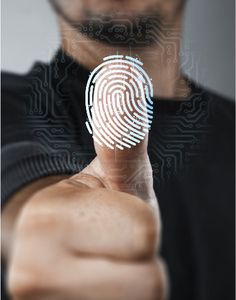

Enter the email address with which you registered.
You will soon receive a link with instructions to reset your password.

You can upgrade your membership to FUTUR+ Client totally free

Web user account created successfully

You will receive an email shortly to confirm your registration. Once confirmed, you can log in with your access data.
If you haven`t received the email, please check your spam folders

Futur+ customer account successfully registered

Our commercial department will review your data as soon as possible
You will receive an email shortly to confirm your registration . Once confirmed you can login with your access data.
If you haven`t recieved the email .Please check your spam folders.

Thank you for your request!

One of our commercial agents will check your futur+ membership request and validate it as soon as possible.


Your registration was successful

Don`t forget to go to your inbox to confirm your email address. Then you can start your course!
Filters:

We are proud to announce that we are the first lab in the world to successfully complete KNX IoT certification. This achievement marks a milestone in the evolution of building automation technologies, reaffirming our commitment to innovation and excellence within the KNX standard.
KNX IoT joins the existing communication media in the KNX standard, such as TP, RF, PL, and KNXnet/IP. It is an extension of the KNX suite that facilitates transmission through physical media and enables field-level communication (sensors and actuators) via IPv6, compatible with various physical networks like WiFi, Ethernet, and Thread. This integration opens up new possibilities for smart building control and automation systems.
Pioneers in the KNX IoT standard and your partner for successful certification!
#futurasmus #testlab #knx #IoT

A KNX project in Spain can always be described as "dynamic", for the simple reason that we know how it starts, but never how it ends, as changes almost always occur
Because of this, we have become accustomed to planning multipurpose universal actuators to prevent the changes that usually arise.
This convenience makes us forget that there are specific actuators, of very good quality, which, with a small initial foresight, can also solve any unforeseen event.
Lingg & Janke has been part of the KNX Futurasmus catalogue from the very beginning. With a very German mentality and very robust products, we highlight as #FuturChoice the ECO+ on/off and shutter, with domestic and industrial relay and SECURE technology, at a very interesting price per channel.
Think about it carefully: in the end, with dedicated actuators and multifunction actuators, the only necessary foresight is to leave more or less free channels in the distribution board. Does the type of actuator really matter?
#KNX, #Lingg&Janke, #ECO+, #Futurasmus, #SalesKNX, #ActuatorsKNX.

The EU Energy Efficiency Directive (EED) has been revised, requiring all newly installed meters in homes to be remotely readable by the end of October 2020.
The directive aims to exploit additional energy-saving potentials to further reduce energy consumption across Europe.
Lingg & Janke, one of the leading KNX metering companies showcase their different smart meters and the solutions they present in order to fulfil these new directives.
Also, they go a step further by offering smart meters that allow consumption data with a much higher resolution than those from the energy providers.
To do this they received the “Pin code” to unlock these features in the meters.

We are very happy to take another step in the collaboration with SIMON (and STEINEL), especially with the help of professionals as committed and enthusiastic as Iñaki Perez Garcia and Juan Callejas. Experts in control systems and in charge of an excellent product catalog, it is always a pleasure to speak with them and share concerns and opinions.
They were in Alicante meeting our team and there is no turning back ...
#simon #steinel #knx #futurasmus #Steinel

Let’s have a look at the EU Cyber Security Developments:
1. Radio Equipment Directive Cyber Act:
The European Commission has postponed the enforcement of the Radio Equipment Directive (RED) to August 1, 2025, to finalize harmonized standards. This revised act includes three new articles and aims to enhance the cybersecurity of wireless devices in the EU.
Key Points:
Manufacturers are advised to contact relevant authorities for more details.
2. Cyber Resilience Act:
Objective: Ensure safer hardware and software with digital components.
Coverage: The Cyber Resilience Act (CRA) aims to safeguard consumers and businesses buying or using products or software with a digital component. Products ranging from baby monitors to smartwatches. KNX products have digital components (such as integrated controllers, gateways, or software interfaces), those specific digital elements could potentially fall under the scope of the Act. In such cases, manufacturers would need to ensure compliance with the cybersecurity requirements outlined in the Act. KNXA is currently studying the extent of the coverage.
Issues Addressed:
Key Provisions:
Implementation:
Regulatory Context:
Scope: Applies to all network-connected products, excluding some categories like open-source software and certain regulated industries (medical devices, aviation, cars).
Timeline:
3. In the UK, there are additional regulations to consider:
1.- NIS1 vs NIS2 Directive:
2.- UK PSTI Act on Cyber Security:
Conclusion: Thanks to the great efforts done by KNX over the previous years, KNX is prepared to face these challenges much better than other protocols that did not place so much importance on secure transmission.
KNX secure complies with these new standards and we KNX guys don’t need to be worried. But surely this will change the dynamics of KNX secure devices in the market. Thus, if you have not prepared yourself to install secure devices yet, start doing it and don’t wait too long…

The professionals who have accompanied us in the Associate Installer course have already taken the first step to integrate audiovisuals and #Multiroom Audio/Video in #KNX projects.
In collaboration with our Genesis, Home Technology Architects colleagues, and Futurasmus, they are now able to offer their clients that extra comfort and luxury in their home with Control4.
An exceptional atmosphere and great enthusiasm in our KNX Solution Center.We'll see what synergies have emerged...
Thank you very much to everyone for coming and especially to the Genesis team, Ronny Meggio, Fco Javier Moreno Ruiz and Giorgio Boschi!
#control4 #futurasmus #knxtraining #genesishta #CONTROL4

ETS6 Professional introduces support for KNX RF Multi, the latest iteration of KNX RF technology, replacing both KNX RF and KNX Ready.
This advanced wireless protocol enhances building control applications with features like frequency agility, utilizing five frequencies, repeaters for signal boosting, fast and slow modes, 'listen before talking' functionality, and rapid ACK (retrying if unsuccessful).
RF Multi devices offer improved security with mandatory support for KNX Data Security and simplified configuration, as all frequency settings are automatically configured by ETS6. Runtime capabilities are derived from a ETS product entry generated with the Manufacturer Tool.
In the German Federal Network Agency Vfg 12/2020, frequencies for short-range radio devices are allocated under §55 of the Telecommunications Act (TKG). For KNX-RF within this range with a maximum ERP of 25 mW, access and interference rules apply. A 1% duty cycle limit is also imposed. This means each transmitter can only transmit for 36 seconds per hour. This prevents continuous transmitters and interference signals from blocking the radio channel.
Hidden fact 1:
But this also means that if you have done a bad configuration and the sender sends to fast, that after the 36 seconds sending time it must wait the remainder of the hour before it may send again. So, in this case it could be that the device apparently is broken but as a matter of fact it is only forced to sleep. The good news though is that the programming time does not count. i.e. The programming time is not added and thus is not reducing the permitted sending time.
Hidden fact 2 (more interesting for manufacturers):
A KNX RF Multi sender transmitting in a slow channel uses a preamble that is 500 ms instead of 15 ms (compared to 5 ms for KNX RF Ready), allowing receivers to sleep longer and hence deplete less their batteries. Now, unofficially, some smart manufacturers use this preamble to store the domain id in the preamble. Thus, if the receiver receives the telegram it first looks at this preamble to check if the received telegram is destinated for him (is in the same domain). If not, the device goes back to sleep directly without actually waking up. In this way the battery life can be even longer.
Hidden fact 3
As I said in the beginning, KNX-RF Multi communication counts with a rapid ACK (retrying if unsuccessful). KNX RF Repeaters collect and pass on such confirmations, so that a verification of a reception is possible over longer distances. But what not everybody knows is that only 64 individual receivers may answer with an ACK. Thus, if you want to send a “All OFF” telegram then you must take this into account. If you have more than 64 receivers you must split the telegram into various telegrams for instance by using logic modules.
Hidden fact 4
There are only 2 RF signal repeaters allowed in a KNX RF Multi line, unlike the 6 repeaters that are allowed in RF Ready line.

Another example of magnificent innovation in KNX courtesy of Atouch Winwel!
Atouch presented as a novelty at the IOT Solutions World Congress the first hashtag#IoT hashtag#KNX products with hashtag#Thread technology.
These communicate with the IoT Hub, which sends the telegrams to the KNX bus through a tunneling connection with a KNXnet/IP gateway/router.
Thread technology allows you to create a 2.4GHz IPv6 mesh network with encryption.
A mesh network allows all devices to communicate with each other, avoiding the need for repeaters and guaranteeing correct communication in projects with a large number of devices.
hashtag#atouch hashtag#knx hashtag#futurasmus hashtag#meshnetwork